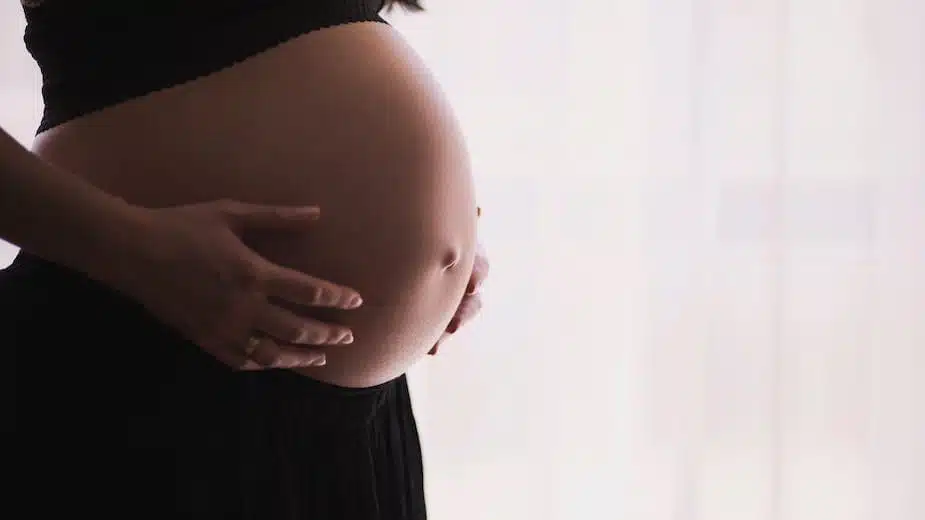Navigating a rare diagnosis that affects sexuality and fertility is intensely personal yet widely misunderstood. For those affected by MRKH syndrome, the journey brings profound grief, self-discovery, and the courage to speak out.
What exactly causes the critical structures of womanhood to never fully form? How do you embrace relationships with an unconventional body? What reproductive options exist when you’re born without a uterus? Where can you find support when no one’s heard of MRKH?
This complete guide on Mayer-Rokitansky-Küster-Hauser (MRKH) syndrome answers it all—with compassion and clarity.
We’ll explore:
- What MRKH syndrome is
- What causes the abnormal development
- Signs and symptoms
- Emotional impact
- Tests for accurate diagnosis
- Available treatments
- Fertility options
- Coping strategies
- Breaking the silence
After reading, you’ll understand this complex diagnosis and gain actionable advice on navigating life’s milestones.
What Is MRKH Syndrome?
MRKH syndrome is a rare congenital disorder affecting the female reproductive tract.
Individuals with MRKH are born missing parts of the internal genitalia or experience abnormal development of:
- Uterus
- Cervix
- Upper vagina
- Fallopian tubes
While the external genitalia appear typical, the internal structures necessary for menstruation and pregnancy do not fully form prenatally as expected.
This affects 1 in every 4,500 women globally, often diagnosed in adolescence when puberty fails to initiate menstrual cycles.
With MRKH, individuals assigned female at birth lack complete Müllerian duct development. The Müllerian ducts create the uterus, fallopian tubes, cervix, and upper third of the vagina in a developing female embryo.
When these ducts abnormally fuse together or dissolve before fulfilling their purpose, it leads to missing reproductive organs—the hallmark of MRKH syndrome.
Causes and Risk Factors: Why Does MRKH Syndrome Occur?
The exact causes of MRKH syndrome remain unclear, though research points to genetic and environmental triggers disrupting crucial fetal development.
Doctors classify the condition as a type of Müllerian duct anomaly (MDA). MDAs prevent the reproductive structures from properly forming prenatally in people assigned female at birth.
Potential causes and risk factors scientists continue investigating include:
- Gene mutations – Missing or altered genes interrupt milestones in embryonic development, including WNT genes
- Abnormal chromosome number or structure
- Maternal diabetes complicating pregnancy
- Certain toxic environmental exposures
- Family history of reproductive disorders
While the defect arises sporadically in over 90% of cases, studies show increased prevalence among close female relatives. Families with a history of MDAs face up to a 19.5% recurrence risk for having multiple affected individuals.
Overall, pinpointing exact causes proves complex with our evolving understanding. But identifying influential factors allows for better detection and management when we see MRKH syndrome’s signature signs emerge.
Signs and Symptoms: Recognizing MRKH Syndrome
For those affected, MRKH syndrome’s symptoms generally become apparent around the expected age of puberty as their peers begin menstruating.
The most common symptoms signaling MRKH include:
- Primary amenorrhea – no menstrual period by age 15
- Failure to fully develop secondary sex characteristics during puberty
- Difficulty with vaginal penetration during attempted sex
- Chronic pelvic pain absent menstruation
Upon examination, doctors diagnosing MRKH also look for:
- An absent or shortened vaginal canal
- Uterine or cervical agenesis – completely missing uterus
- Underdeveloped or missing fallopian tubes
- One kidney or other renal abnormalities
- Spinal defects such as scoliosis
The wide range of developmental issues reflects hormone disruption and impaired cell signaling early on. These abnormalities can also affect vulvar, skeletal, cardiac, auditory, and renal developmentalongside the reproductive system.
While many experience consistent symptoms, MRKH syndrome’s severity and additional effects differ between individuals. Accurately identifying associated conditions allows for building an informed treatment plan tailored to each patient’s needs.
The Emotional Impact: Coping with Diagnosis and Beyond
Receiving an unexpected MRKH diagnosis often sends shockwaves through adolescents’ imagined futures as young women.
Sudden loss of assumed fertility combined with sexual difficultiesfrequentlytriggers overwhelming grief, depression, and relationship insecurities at a formative age. Some common emotional responses include:
- Feeling betrayed by your body
- Envy and sadness towards peers beginning womanhood
- Struggling with feminine identity tied to reproduction
- Shame discussing intimacy needs even with doctors
- Anxiety about disclosing condition to potential partners
- Isolation from friends and family that don’t understand
Left unaddressed, these issues threaten long-term resilience against MRKH’s ongoing reality. But with compassionate support, individuals build self-confidence embracing their whole selves—regardless of reproductive capacity.
Testing and Diagnosis: Identifying MRKH Syndrome
Diagnosing MRKH requires multiple examinations to pinpoint structural abnormalities and associated conditions:
Physical Exam
An initial pelvic exam notes any visible vaginal or cervical anomalies while checking for typical puberty markers like breast development.
Imaging Tests
Internal ultrasounds, MRIs, and CT scans detail uterine structure and other developmental defects through detailed imagery.
Chromosomal Analysis
Genetic testing identifies DNA abnormalities associated with reproductive disorders.
Hormone Levels
Blood tests measuring FSH, estrogen, AMH, and other hormone levels map out current reproductive function.
Combining insights from these diagnostic approaches allows accurate MRKH identification while revealing variantassociatedconditions which shape treatment paths. Conclusive diagnosis provides clarity after months of uncertainty struggling through emerging symptoms and questions.
Catching MRKH early on leads to prompt intervention and emotional support when impacted individuals need it most—navigating the beginnings of sexual and reproductive health.
Treatment Options: Navigating Life with MRKH Syndrome
Treatments for MRKH aim to enable typical functionand a sense of normalcy through creating a neovaginafor sexual intercourse and, in some cases, pregnancy:
Surgical Interventions
constructive surgeries like Vecchietti and Davydov procedures use grafting techniques to extend vaginal depth and width.
Vaginal Dilation
Regularly dilating tissue promotes further vaginalgrowth much like passive penetration would over time.
Hormone Therapy
Estrogen cream or oral contraceptives containing estrogen develop secondary sex characteristics and maintain optimal reproductive health.
Mental Health Support
Ongoing counseling and support groups build resilience for the emotional journey unique to MRKH patients.
Current approaches allow most with MRKH syndrome to enjoy healthy sex lives and family planning through gestational surrogacy or adoption. Still, treatment journeys remain highly personal—full of difficult choices weighing individual priorities like fertility, relationships, and identity.
While emotionally and financially taxing at times, pursuing the best personalized path brings freedom and power afterinitial lost bearings.
Empowered individuals refuse to let their diagnosis define them. Instead, they actively shape their continual blossoming into whole, fulfilled people despite society’s narrow expectations of womanhood.
Fertility and Family Planning Options with MRKH Syndrome
Major fertility advances in recent years bring new hope to those experiencing fertility loss from MRKH syndrome.
Previously told no chance of pregnancy, patients now actively preserve reproductive options through advanced technologies.
Fertility Preservation – Freezing unfertilized eggs, fertilized embryos, or ovarian tissue preserves peak fertility for future conception chances.
Gestational Surrogacy – IVF creates related embryos to implant within a surrogate carrier who gestates the pregnancy.
Adoption – Adopting biological or foster children unrelated to parents builds families where pregnancy proves impossible.
Though often emotionally and financially complex, today’s possibilities allow many with MRKH to realize their dreams of parenthood however works best for them.
Weighing Options for Life after Diagnosis
Receiving an MRKH diagnosis sparks the start of a lifelong journey crafting inner resilience and self-love.
While always challenging at times, incorporating holistic care empowers individuals to thrive despite setbacks.
Prioritizing emotional health through therapy and support groups equips patients managing difficult news. Identifying role models and community alleviates feeling alone in the experience.
Discussing intimacy needs openly and confidently paves the way for mutually fulfilling relationships respecting every body’s uniqueness.
And exploring all family planning options retains hope that future motherhood unfolds as desired, whether through surrogacy, adoption, or technology yet to come.
Healing is not linear, but each courageous step towards wholly loving your whole self possibilities expand beyond limiting diagnoses.
The Takeaway: Spreading MRKH Awareness
Despite impacting thousands globally, MRKH syndrome remains largely unknown and taboo. Breaking silence and stigma uplifts those affected.
Better scientific understanding combats outdated assumptions equating womanhood solely with reproduction. Holistic care models address mental health aspects and sexuality alongside the physical condition.
And shared stories from those living fully with MRKH syndrome dispel myths that something essential remains “missing”.
Through compassion and wisdom, we make space for all bodies and identities excluded by rigid binaries around gender. Moving from ignorance to empowerment advances support and resources helping patients thrive each day.
At the most vulnerable age, those diagnosed with MRKH syndrome deserve community that emboldens them to transform adversity into purposeful awareness. We all must play a role normalizing this variance of womanhood.
After all, embracing the entirety of human diversity unleashes our boundless potential to evolve.



